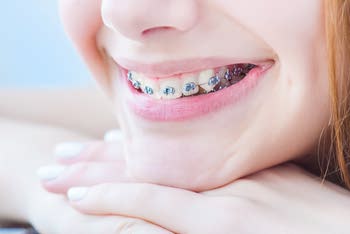Before going any further, let’s get one thing straight:
All orthodontists are, in fact, dentists – but not all dentists are actual orthodontists.
You should be able to make informed decisions about dental treatment options, which is why it’s vital for you to have a basic understanding of the differences between the two.
What Does A Dentist Do?
Much like your family’s GP, a dentist is a skilled general practitioner that focuses on oral care and can help diagnose and treat common problems and diseases that affect your mouth – mainly teeth and gums.
When it comes to primary dental care, general dentists are the way to go. Their training is focused on helping you keep your teeth and gums healthy, and handling a wide range of dental issues, from cleaning to repairing teeth, and in some cases, minor surgical procedures:
- Tooth decay and cavities
- Gum disease
- Tartar
- Teeth whitening
- Crowns
- Bridges
- Venires
- Root canal
- Pulling teeth
- Diagnosing oral cancer
On top of that, your dentist is there to encourage you to practice good oral hygiene and remind you about the importance and benefits of regular, twice-a-year cleanings.
That said, there are some dentists out there that can provide orthodontic treatment, as well – and at a very high standard, for that matter – but in most cases, there’s a significant difference in their overall experience and training, compared to specialist orthodontists.
If your dentist notices poor dental alignment, malocclusion, protruding teeth, and other similar issues during a routine check-up, they’ll refer you to a certified orthodontist.
What Does An Orthodontist Do?
While dentists and orthodontists have one thing in common – the focus on oral health – there’s a vital difference in their training and qualifications.
If you think about it, it’s like drawing a line between general-practice doctors and surgeons – you wouldn’t expect your family GP to perform surgery, now, would you? Surgeons require additional, specialized medical training – and the same goes for orthodontists in their respective field.
The focus of their training is on correcting alignment problems, which is the main reason why your dentist referred you to the orthodontist in the first place.
So, what exactly does an orthodontist do?
They deal with more complex dental issues, such as correcting improper bite, teeth, and jaw alignment.
Here’s an overview of the most common issues an orthodontist can treat:
- Crooked teeth
- Crowded teeth
- Gaps between teeth
- Overbite
- Underbite
- Crossbite
- Open bite
- Facial imbalance
- Temporomandibular disorders (TMJ)
To manage these conditions, orthodontists use a wide range of either fixed or removable appliances, that all work on the same principle:
They put light, constant pressure on the teeth, moving them into the correct position gradually.
The severity of your dental issues is the deciding factor in choosing the right course of orthodontic treatment for you.
Who Should You See About Correcting Your Smile?
Your smile is probably one of the first things people will notice about you in your day-to-day life, so, it’s vital to take proper care of it, and do everything in your power to keep your teeth healthy and straight.
That said, if correcting your smile is your primary goal, you can book a free consultation with a leading orthodontist such as Beacon Smiles Dental! Whether you’re looking to get Invisalign or the traditional orthodontic treatments, they can help you with your smile!



Good to know the difference, interesting article, thank you.
on April 29, 2019 at 1:28 pm talkhealthtalkhealth